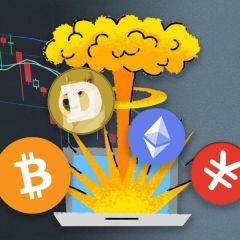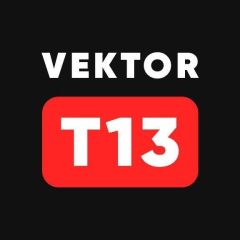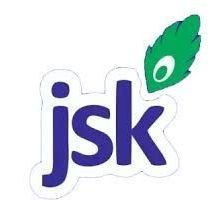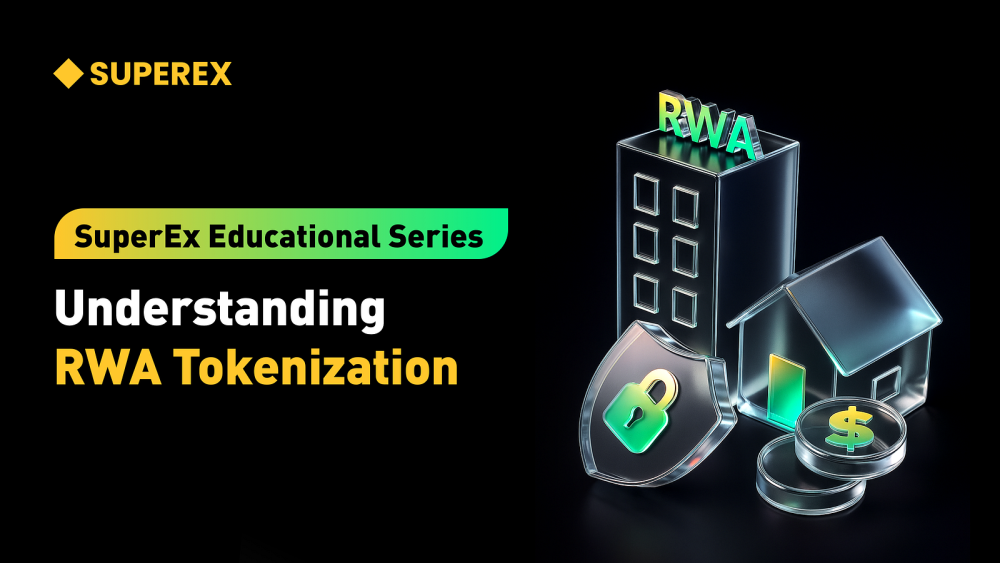All Activity
- Past hour
-
Absolutely agree & Great breakdown of where DeFi is heading in 2025 — especially the shift toward real-world asset tokenization and smarter, security-focused infrastructure. As an entrepreneur, it’s clear that the next wave of successful projects will be the ones that balance innovation with user trust and accessibility. What really stands out is how UX is becoming just as important as the underlying tech. It’s funny, but it reminds me of how personal presentation works too: the backend can be powerful, but if the “front end” isn’t polished, users hesitate. Even something simple — like keeping your look sharp with inspiration from corte vibe — can influence how confidently you show up in the space. DeFi founders who understand both the tech and the human side of adoption are the ones who’ll win in 2025.
- Today
-
JSKAMC joined the community
-
No trading platform is complete without robust risk management features, and Galvioren takes this to heart, offering tools to help minimize risks and protect your investments. - Stop-Loss and Take-Profit Orders: Customize your risk level by setting these orders. They automatically close a position when a particular price is reached, controlling potential losses or securing profits. - Portfolio Diversification Analysis: Assess your portfolio to ensure it's well-diversified. By spreading investments across various assets, Galvioren helps mitigate the risk of heavy losses. - Risk Assessment Tools: Evaluate the risk associated with potential trades before you make them. This feature provides risk/reward ratios, volatility analysis, and more. These risk management tools empower you to devise strategies that protect your investments and minimize potential downsides, ensuring that your trading activities are sustainable over the long haul. With such advanced features, the Galvioren Trading Platform not only aims to be an industry leader but also strives to be the go-to platform for traders aiming to enhance their strategies and maximize investment potential. Whether you're starting out or looking to scale up your trading activities, Galvioren has the tools and features necessary to facilitate your growth and success in the trading world. OFFICIAL WEBSITE https://www.thecryptodays.com/5251-galvioren-review/
-
galvioren joined the community
-
VPBank_CPA_VN Credit Card Campaign (#1174) – Payout up to 508,000 VND per approved lead! If you’re looking for a finance offer with high payout, strong conversion rates, and large demand, the VPBank credit card campaign is definitely worth testing. VPBank is one of the leading banks in Vietnam, offering a fast, fully online card registration process — ideal for young users, office workers, and anyone who prefers cashless transactions. 📌 Quick Info: Payout: 508,000 VND/lead (~20 USD) Model: CPA Market: Vietnam Vertical: Finance – Banking Why this campaign performs well: ✔ Trusted banking brand → high approval rate ✔ Simple 100% online card registration ✔ Large and easy-to-target user base ✔ Works well on TikTok, Threads, finance blogs, review pages, and community groups 👉 Check details & start testing: https://account.dinos.vn/offers/detail/1174 Dinos Vietnam – The Trusted Network 🌐 Website: https://dinos.vn?utm_source=Monetize 📣 Facebook: https://www.facebook.com/DinosVietNam
-

Selling Gmail USA IP | Gmail MIX IP | Outlook Old accounts
BURZH replied to BURZH's topic in Social Media Services
You can buy Threads/Tumblr/Twitch/Spotify accounts in our bot using the link below. New items have also appeared: ▪️ Gmail Türkiye IP I NEW I CLEAN ▪️ Gmail USA IP I NEW I CLEAN ▪️ Gmail Pakistan IP I NEW I CLEAN ▪️ Telegram RU I TDATA I 15+ DAY I 2FA TG bot: https://t.me/Raccoonstockbot Channel: https://t.me/RaccoonStock Contact: https://t.me/changreta -
Thanks for sharing your results! With 80 clicks turning into 25 leads, your performance looks pretty solid so far. Regarding long-term stability, it usually depends on: The quality of your traffic How well your audience matches the product Competition at the time The campaign’s approval rules and algorithm Overall, this offer is currently performing quite consistently, and many other publishers are reporting good results as well. You can try scaling a bit over the next few days to monitor the trend. If you need help optimizing traffic, feel free to reach out!
-
Choosing the best blockchain for affordable Token Development depends on your budget, performance needs, and long-term goals. Networks like BNB Chain and Polygon are widely preferred for cost-effective development because their transaction fees are low and their ecosystems are highly scalable. For projects that require faster processing and lower congestion, Solana or Avalanche can be strong choices. On the other hand, Ethereum remains the most trusted blockchain for enterprise-level reliability, although its gas fees may be higher. If your project needs cross-chain compatibility or multi-chain deployment, you might consider networks like Arbitrum or Base. Ultimately, the best blockchain aligns with your use case, whether it’s DeFi, gaming, governance, loyalty systems, or RWA tokenization. Conducting a technical comparison of speed, cost, community support, and developer tools will help you make the most suitable decision. Affordability must always be balanced with long-term scalability and security.
-
Alexeidj joined the community
-
In our previous educational article, we explored Real-World Assets (RWA) — the concept of bringing tangible assets like real estate, bonds, commodities, and even invoices into the blockchain world. But as the RWA narrative continues to dominate discussions in 2025, one crucial question arises: How are these “real-world” assets actually brought on-chain? That’s where RWA Tokenization comes in — the technical and economic process that turns real-world value into programmable digital tokens. In essence, RWA Tokenization is the operational layer of RWA, transforming the idea of bridging traditional finance (TradFi) and DeFi into a working reality. What Exactly Is RWA Tokenization? Tokenization means creating a digital representation of a real-world asset on a blockchain.This token serves as a digital claim or fractional representation of ownership, rights, or future income linked to the underlying asset. In simple terms: If RWA is the “what,” tokenization is the “how.” Example: A real estate property worth $1 million can be divided into 1,000,000 tokens, each representing $1 of ownership. These tokens can be: Traded on-chain (in secondary markets) Used as collateral in DeFi lending Distributed to investors around the world — instantly and transparently This approach makes illiquid assets liquid, divisible, and globally accessible, opening the door to a multi-trillion-dollar transformation of global finance. The Tokenization Workflow: How It Actually Works Tokenizing real-world assets involves several layers and participants.Here’s a simplified breakdown of the process: Step 1: Asset Identification and Legal Structuring A company (the issuer) identifies an eligible real-world asset — such as a government bond, invoice, or property.Then, legal entities (often called Special Purpose Vehicles, or SPVs) are created to hold the asset and ensure compliance with local regulations. Step 2: Digital Representation on Blockchain A smart contract is deployed to represent the asset in token form.Each token might represent: Ownership (e.g., shares in an SPV) Debt claim (e.g., interest-bearing tokens) Revenue rights (e.g., income share) Step 3: Custody and Verification Third-party custodians or oracles verify that the real-world asset exists and is properly managed.This step is crucial to maintain trust and prevent fraud — often handled by regulated custodians or auditing firms. Step 4: Token Distribution Once verified, the tokens are distributed to investors via platforms or marketplaces — typically under compliance frameworks like KYC/AML and regional securities laws. Step 5: On-Chain Integration The tokens can now interact with DeFi protocols — for lending, staking, or liquidity provision — effectively bridging TradFi and DeFi. Why Tokenization Matters: The Core Advantages Tokenization isn’t just a technological novelty — it’s the financial evolution that redefines how we own, trade, and interact with value.By bridging the gap between illiquid real-world assets and frictionless digital markets, tokenization is reshaping global capital flows at every level — from small investors to sovereign wealth funds. Below are the five core advantages that explain why tokenization matters — and why it’s widely viewed as the “missing link” between traditional finance (TradFi) and decentralized finance (DeFi). 1. Liquidity for Illiquid Markets Illiquidity is one of the biggest inefficiencies in global finance.Traditional assets like real estate, private equity, or fine art often have long holding periods, limited buyers, and complex settlement procedures. Tokenization changes that dynamic entirely. By dividing ownership into fractional, transferable tokens, these assets can be traded 24/7 on blockchain-based secondary markets, giving investors an exit option that never existed before. For instance, instead of needing $1 million to buy an entire property, an investor could purchase 1,000 tokens worth $1,000 each — effectively owning a verifiable fraction of the asset. This democratizes access, but it also injects liquidity into previously locked capital, allowing institutions to manage portfolios with more flexibility and efficiency. Liquidity also improves price discovery — as tokenized assets trade more frequently, the market naturally determines fair value in real time rather than through infrequent private appraisals. 2. Global Accessibility In traditional markets, geography and regulation define who can invest in what.Real estate in Singapore, bonds in the U.S., or private credit in Europe often remain siloed due to jurisdictional limits. Tokenization breaks those barriers by transforming ownership rights into borderless, blockchain-native assets. Anyone with an internet connection and a compliant wallet can potentially access high-value investment products that were once reserved for institutions or accredited investors. This creates a new era of financial inclusion — where global investors can diversify portfolios across regions and asset classes with just a few clicks. It also allows asset issuers (like developers, lenders, or governments) to tap into global liquidity pools, expanding their investor base beyond traditional borders. As blockchain networks continue to integrate KYC-compliant identity solutions and regulatory-compatible layers, this global accessibility will only accelerate. 3. Transparency and Auditability One of the most profound advantages of blockchain-based tokenization is radical transparency. Every issuance, transfer, and redemption of a tokenized asset is recorded immutably on-chain. This means ownership records are verifiable in real time, eliminating the need for centralized registries or reconciliation processes. For investors, this transparency builds trust and accountability; for auditors and regulators, it provides a real-time view of financial activity without relying on delayed or opaque reporting systems. In traditional finance, information asymmetry often leads to mispricing or even fraud. With tokenization, data integrity is guaranteed by code and consensus, not by intermediaries — a shift that could make compliance, auditing, and risk management significantly more efficient and reliable. 4. Lower Costs and Faster Settlement The traditional financial system is full of middlemen — brokers, clearinghouses, custodians, and settlement agents — each adding fees and delays to every transaction. Settlement cycles can take T+2 or longer, particularly across jurisdictions. Tokenized systems eliminate these frictions. Transactions occur directly between blockchain addresses via smart contracts, enabling instant (T+0) settlement and near-zero counterparty risk. Lower operational costs also mean that smaller investment sizes become viable. Previously, it made little sense to sell $100 of a bond due to administrative costs — but tokenization makes such micro-investments economically feasible. In short, tokenization doesn’t just make markets faster — it makes them fairer and more efficient for all participants. 5. Programmable Finance and Composability Perhaps the most revolutionary aspect of tokenization lies in its programmability. Once an asset exists on-chain, it can interact seamlessly with other smart contracts and DeFi protocols — unlocking endless possibilities for automated financial logic. For example: A tokenized bond can automatically distribute coupon payments to holders every month. A tokenized property can send rent income to token holders in real time. Tokenized treasuries can be used as collateral for on-chain loans or integrated into yield strategies. This composability — the ability to combine different financial primitives into new, automated structures — is what transforms tokenization from a digitization tool into an innovation engine. Imagine a world where traditional yields meet DeFi automation: A U.S. Treasury token generating 4% APY could be automatically lent out on-chain to generate an extra 1% yield — all governed by transparent smart contracts, not human intermediaries. Key Categories of Tokenized RWAs The RWA tokenization market has diversified rapidly. Here are the major categories dominating the ecosystem in 2025: Among these, tokenized Treasury bills have become the fastest-growing segment, led by issuers such as Ondo Finance, Maple, and Superstate. The Infrastructure Behind Tokenization RWA tokenization doesn’t happen in isolation. It requires a robust ecosystem: 1. Tokenization Platforms Projects like Centrifuge, Goldfinch, Maple, and Clearpool provide the tools to onboard real-world assets into blockchain environments. 2. Custodians and Oracles Firms like Chainlink, Circle’s Reserve Reports, and Credora verify asset backing and transparency. 3. Blockchains and Networks Layer 1 and Layer 2 chains optimized for financial operations — such as Ethereum, Avalanche, Polygon, Solana, and Base — serve as the settlement layers for tokenized RWAs. 4. DeFi Protocol Integration Once tokenized, RWAs can be used as collateral on protocols like Aave, MakerDAO, and Compound, merging traditional yield products with decentralized capital markets. The Regulatory Landscape Tokenization operates at the intersection of blockchain and traditional financial regulation, which makes compliance critical. United States: SEC treats most RWA tokens as securities; issuers must comply with Reg D or Reg S exemptions. Europe: MiCA (Markets in Crypto-Assets Regulation) offers clearer frameworks for asset-backed tokens. Asia: Hong Kong, Singapore, and Japan are rapidly positioning themselves as RWA-friendly hubs, with regulated tokenization pilots for bonds and funds. Regulatory clarity remains the biggest catalyst for large-scale RWA adoption in the next few years. The Future of RWA Tokenization RWA Tokenization is not just a trend — it’s a structural transformation of global finance. According to Boston Consulting Group, up to $16 trillion worth of assets could be tokenized by 2030. In this vision, tokenized assets will: Serve as collateral in DeFi lending Power on-chain money markets Enable instant cross-border settlements Connect real-world income streams to decentralized infrastructure Eventually, tokenization could become as natural as listing shares on a stock exchange — but faster, borderless, and transparent. Conclusion: Tokenization as the Engine of Real-World Adoption RWA Tokenization is the practical foundation turning blockchain from a speculative playground into a functional financial system. It is the bridge that connects yield-hungry DeFi capital with traditional, yield-generating real-world assets — creating a new era of hybrid finance (HyFi). The story of RWA Tokenization is still unfolding, but one thing is clear: The next trillion dollars in crypto won’t come from memes or speculation — it will come from real-world assets brought on-chain through tokenization.
-
#SEC #okenClassification #Crypto Industry? On November 12, at the Federal Reserve Bank of Philadelphia’s fintech conference, U.S. Securities and Exchange Commission (SEC) Chair Paul Atkins opened with a very straightforward and quite amusing remark: “If you’re already tired of hearing the question ‘Are crypto-assets securities?’ I completely understand.” What does this mean? Very simple: starting today, you no longer need to be troubled by the question of whether crypto-assets are securities. Indeed, at this conference he officially announced that the SEC will establish a four-category token classification system based on the Howey Test. This is not only the clearest and most systematic statement of position by a U.S. regulator in the crypto-asset arena, but also the first time in a decade that the entire crypto market has seen a clear, systematic, and implementable regulatory model. This is not an ordinary “policy update.” This is a fundamental restructuring of the standards that define the essence of crypto-assets. This is the critical moment that ends the regulatory gray zone and lays the foundation for compliant digital assets over the next decade. Why is the industry so shaken? Because for the past ten years, the crypto market has been stuck on an unanswerable question: “Exactly what counts as a security?” This question has trapped American entrepreneurs, trapped institutional capital, and trapped the construction of the tokenized world’s infrastructure. The SEC’s latest stance provides a clear path for the first time: Crypto-assets ≠ are not inherently securities. Utility tokens, collectibles, and network tokens do not fall under securities. Only “tokenized securities” belong under traditional securities regulation. A token’s status can “dynamically change” from security → non-security as the technology matures. This is tantamount to: the United States officially recognizing that crypto-assets are not a one-size-fits-all world of securities, but a multi-layered new asset system. This will profoundly change the future behavior of exchanges, project teams, institutions, developers, and even users. SEC’s Four-Category Token Regulatory Framework: The New “Basic Rules” for the Industry The SEC’s four-category token classification and its interpretation are the core of this article — naturally, they are also the focus of industry attention. The following content will parse these four standards layer by layer, and clarify the regulatory implications, future development paths, and industry impact for each category. Category One: Digital Commodities & Network Tokens 1)What is this? The core feature of this category: it does not rely on the issuer’s “essential managerial efforts” to increase value; its value comes from the functional nature of the network protocol and decentralized operation. Its most notable characteristic is that the token’s use value significantly outweighs its speculative value. Paul Atkins made it clear that, in his view, these tokens do not fall under the securities umbrella. This provides a clear regulatory position for major cryptocurrencies such as Bitcoin and Ethereum. This means: “Independently operating network tokens” of major chains like BTC and ETH fall into this category They are not securities They are not subject to the SEC’s traditional securities laws This is a major signal: for the first time, the United States has clarified that public-chain tokens such as Bitcoin and Ethereum are digital commodities rather than securities. This will directly accelerate institutionalization across mining, staking, DeFi, and derivatives markets. 2)Industry significance The introduction of this classification is equivalent to: Institutional investment can legitimately enter the BTC/ETH ecosystem A clearer construction path for project teams: decentralization is the key to compliance Institutional products such as ETFs, futures, and custody will further expand This is a boon for the entire Layer 1 ecosystem. Category Two: Digital Collectibles (NFT-type Assets) 1)What assets fall into this category? Art NFTs: music, video, game items, digital trading cards Virtual IP, avatars, limited digital memorabilia The SEC made it clear: These tokens are not securities Purchase purposes are based on collection, access, or usage They do not rely on the project team’s continued operation to generate profits By explicitly excluding such digital collectibles from the definition of securities, the SEC has provided urgently needed regulatory certainty for the NFT market — this means the NFT market has, for the first time, received confirmation of “non-security status.” 2)Industry significance NFT projects will no longer face policy risk of being labeled securities; Exchanges can more freely expand the NFT market; Enormous room for development in chain gaming, digital content, and brand IP; NFT 2.0 (asset credentials, on-chain identity, membership systems) will enter a boom cycle. Category Three: Digital Utilities (Utility Tokens) This covers tokens with practical functions, such as memberships, tickets, credentials, proofs of ownership, or identity badges. These functional tokens focus on specific uses rather than investment objectives, and thus are carved out from the securities category. Purchasers do not expect to profit from the “managerial efforts of others.” This class of tokens has been a persistent point of controversy, and the SEC has finally provided a clear definition. 1)Core characteristics of utility tokens: Used to access a service (tickets, memberships, bandwidth, computing power). Used for on-chain identity, credentials, or functional usage. Do not provide purchasers with an “expectation of profits from the efforts of others”. The SEC made it clear: Utility tokens are not securities. They focus on practical use cases and do not constitute investment contracts. As networks mature, the role of the project team diminishes. In other words: the majority of tokens that were forced to “pretend to be securities” over the past decade due to regulatory ambiguity finally have a compliant industry positioning. Why is this important? Because a large number of tokens in the current market — including most public-chain ecosystem tokens, governance tokens, application tokens, and GameFi tokens — may fall into this category. 2)This will significantly change: The issuance logic of Launchpads. The way users participate in token economies. The compliance documentation required by exchanges to list assets. Utility tokens derive their value from usage scenarios rather than investment expectations — this gives the industry a completely different narrative framework. Category Four: Tokenized Securities This is the only token type classified as a security. Paul Atkins emphasized: “A stock doesn’t change its nature as stock because it’s represented by paper certificates, DTCC account records, or blockchain tokens. A bond doesn’t cease to be a bond because smart contracts track its payment flows.” 1)Types include: Tokenized versions of equities. Tokenized versions of bonds. REITs, fund shares. Any “on-chain form of traditional securities”. The SEC stressed: an asset does not cease to be a security simply because it is converted into token form. A stock is still a stock, a bond is still a bond, an ETF is still an ETF — only the recording medium and settlement method change. 2)Industry significance This classification lays the foundation for a “Wall Street on-chain.” In the future, we will see: Tokenized Treasuries Tokenized equities On-chain funds On-chain versions of all financial products This market will be in the tens of trillions. Exchanges, custodians, and compliance firms will form a new competitive landscape here. The SEC’s “Dynamic Token Identity” Is the Most Revolutionary Part The four-category structure is not the SEC’s biggest breakthrough. The real breakthrough is that, for the first time, the SEC acknowledges: a token can transform from a security → a non-security. When a network is sufficiently decentralized: The project team’s managerial efforts no longer determine value; The token’s usage scenarios operate independently; Governance is dispersed; Protocol upgrades are driven by the community; As long as the above prerequisites are met, the token can exit its “investment contract” status. This resolves the biggest issue of the past decade: “A token might look like a security at issuance — what happens once it matures?” Now the U.S. has provided the answer: a token need not carry a lifelong securities attribute because of the “manner of issuance.” This will affect: New projects’ token issuance routes Regulatory exemption paths Community governance models The pace of project decentralization This is the first truly operable regulatory path the industry has seen in ten years. Industry Impact — A SuperEx Perspective Exchanges (especially CEXs) will face business-structure overhauls Exchanges will need to update along the four categories in the future: Listing classifications KYC/AML models Risk disclosures Trading-pair categories Clearing and custody compatibility In particular: NFT markets can expand more boldly Utility-token listings will have a stronger regulatory basis Tokenized securities will require dedicated compliant zones U.S. exchanges will be affected first, but global platforms will gradually align to the same standards. Project teams: decentralization and functional delivery will be the only compliant path This classification system sends a clear signal to project teams: don’t treat tokens as financing tools — treat them as functional tools. Over the next 3–5 years, a project’s core competitiveness will be: Whether true decentralization can be achieved. Whether there is natural on-chain usage demand. Whether the token can shift from “investment contract” to “network function”. Whether the team can reduce key centralized developer control. Projects will move more rapidly toward: DAO-ization. Modular governance. Code immutability. Autonomous protocol operation. Institutions: digital commodities and on-chain securities will enter “dual fast lanes” Institutions have long been constrained by compliance concerns. Now two paths are clearly delineated: (1) Digital commodities (BTC/ETH) path: Futures, perpetuals, and ETFs can all expand. Capital can participate with lower legal risk. The on-chain derivatives market will boom. (2) Tokenized securities path: Wall Street enters crypto. Treasuries, funds, and bonds will be issued on-chain in large numbers. On-chain settlement will become the institutional standard. The U.S. will use regulatory clarity to re-compete for global crypto leadership Over the past five years: Europe has MiCA. Hong Kong opened a licensing regime. Singapore advanced compliant asset management. The U.S. lagged behind for a long time. But the Token Classification Law changes all this: it is the “inflection point” for the U.S. to vie for the definitional power of crypto regulation. Over the next decade, global crypto regulation may be rebuilt along U.S. lines. Conclusion The SEC’s four-category token classification system is not a simple compliance policy; it is: A definitional standard for digital assets. A rules foundation for industry participants. The shared boundary of innovation and compliance. A blueprint for global regulation over the next decade. An accelerator for the convergence of crypto and traditional finance For the first time, it allows the industry to answer three most fundamental questions: What is a security? What is not a security? How can a token transform from a security into a non-security? This not only ends the crypto industry’s ten-year regulatory fog, but also opens a decade-long period of institutionalized growth. The future crypto world will not be just the “coin circle,” but rather: A digital commodities system. A digital collectibles system. A digital utilities system. A tokenized securities system.
-

Any dedicated GPU server to handle AI/ML workloads?
Daniel165 replied to Torabingo's topic in Hosting & Domain Providers
Looking for the best dedicated server hosting? bodHOST’s Black Friday instant 10% OFF deal gives you premium performance at a reduced price. With robust hardware and dependable uptime, these servers are built for resource-heavy workloads. Don’t miss this limited-time opportunity to get enterprise-level hosting for less. -
MonetizeBetter would like to wish all members celebrating their birthday today a happy birthday: dangkykubetim (34)blockchaincommunity (30)Vikasbrian (29)mydigimenu (36)pedro brito (32)ferdaus (32)Annamedley (20)sureshkumar978 (32),
-
I particularly appreciate Exmasters.com proactive stance on cybersecurity, ensuring that professionals like myself can focus on business without worrying about threats. Try their cheap vps for wordpress. Performance is top-tier, and their support team is fantastic.
-
I thought of moving to other hosts but Libertyvps.net bitcoin hosting service is really good and I'm gonna stay with them for quite sometime. It is a solid hosting provider whose feature-packed hosting services can scale according to your needs. Competitive pricing without compromising on quality.
-

Any dedicated GPU server to handle AI/ML workloads?
Boomlaka replied to Torabingo's topic in Hosting & Domain Providers
If transferring from another ahost, check if the provider offers free migration services. Manual migration can be complex and time-consuming. Check out these reliable dedicated server hosts: 1) GTHost.com 2) HostingSource.com 3) Beeksgroup.com 4) Hetzner.com The combination of quality and cheapness makes them attractive for the greater part of the web masters. -
NeironVPS.com is not a newcomer to the web hosting industry by any stretch of the imagination, and has been in business since 1999 starting out with their own infrastructures, networks, and in-house staff. If you are looking for a web hosting solution that can provide TRUE 24/7 semi-managed support, NeironVPS will be able to more than meet your needs. Due to the fact that we have real people taking care of all of our tickets, we can guarantee that 99% of the tickets that are put into our system will have a personal reply to them within 30 min. The hosting provider is backed by many years of experience, and due to that experience we have implemented a significant amount of disaster planning in order to preserve any enterprise-level data, and the services surrounding that data. Check out Neironvps.com NVMe VPS Hosting Packages: Every VPS Servers we offer includes full root access, enabling you to run whatever you wish whenever you want to. NVMeVPS1 Starting at $5.95/month - ORDER NOW CPU 1хE5-2680v4 Dedicated RAM 1 GB Disk Space NVMe 10GB Bandwidth 1 TB per Month Locations - USA, Los Angeles; Germany, Nuremberg; Switzerland, Zurich NVMeVPS2 - Starting at $7.95/month - ORDER NOW CPU 1хE5-2680v4 Dedicated RAM 2 GB Disk Space NVMe 20GB Bandwidth 2 TB per Month Locations - USA, Los Angeles; Germany, Nuremberg; Switzerland, Zurich NVMeVPS4 - Starting at $14.95/month - ORDER NOW CPU 2хE5-2680v4 Dedicated RAM 4 GB Disk Space NVMe 30GB Bandwidth 4 TB per Month Locations - USA, Los Angeles; Germany, Nuremberg; Switzerland, Zurich NVMeVPS8 - Starting at $34.95/month - ORDER NOW CPU 4хE5-2680v4 Dedicated RAM 8 GB Disk Space NVMe 50GB Bandwidth 6 TB per Month Locations - USA, Los Angeles; Germany, Nuremberg; Switzerland, Zurich Operating Systems: CentOS, Ubuntu, Debian, Windows Server. Additional Options VPS Server: ISPmanager Lite - Starting at $10/month ISPmanager Business - Starting at $25/month cPanel/WHM - Starting at $35/month Additional IPs - Starting at $2/month Here are Neironvps.com dedicated servers: Datacenter: USA, Los Angeles Dual X5680 Starting at $99/month - ORDER NOW CPU Intel Xeon 2xX5680 Dedicated RAM 16 GB Disk Space SSD 100 GB IP IP's 1 Bandwidth 10 TBs Dual E5-2670 Starting at $149/month - ORDER NOW CPU Intel Xeon 2xE5-2680 v3 Dedicated RAM 64 GB Disk Space SSD 2 X 512 GB IP IP's 1 Bandwidth 30 TBs Datacenter: Germany, Nuremberg Server i7-6700 Starting at $99/month - ORDER NOW CPU CPU Intel® Core™ i7-6700 Dedicated RAM 16 GB Disk Space SSD 100 GB IP IP's 1 free Bandwidth 10 TB per Month Server i7-8700 Starting at $149/month - ORDER NOW CPU CPU Intel® Core™ i5-13500 Dedicated RAM 64 GB Disk Space SSD 2 x 512 GB IP IP's 1 free Bandwidth 20 TB per Month Datacenter: Switzerland, Zurich Server E3-1220 Starting at $99/month - ORDER NOW CPU Intel® Xeon E3-1220 V3 Dedicated RAM 16 GB Disk Space SSD 100GB IP IP's 5 Bandwidth 10 TB per Month Server 2xX5670 Starting at $299/month - ORDER NOW CPU Intel® Xeon 2xX5670 Dedicated RAM 64 GB Disk Space HDD 2 X 2TB IP IP's 28 Bandwidth 50 TB per Month Feel free to Contact US! 19 Carbeen ave. St Ives, NSW, 2075 sales@neironvps.com Support 24/7: 1(800)685-14-55
-
If you're looking for Fast Virtual Private Servers, GTHost.com is the Solution! Real-Time Listing | Delivery in seconds 24/7 At GTHost, we believe in creating a service and environment that supports openness and complete transparency. Virtual private servers (VPS) provide a fantastic solution for all your web hosting needs. Whether you’re starting a blog, running an online store, or managing a business website, GTHost offers the flexibility and performance for all your online projects. Our Looking Glass portal supports our mission of transparency by allowing you to easily check the connectivity of GTHost network and also to perform several key tests including ping and trace. We launched a KVM VPS service in 18 locations: Ashburn, Atlanta, Chicago, Dallas, Los Angeles, Phoenix, Miami, Detroit, NYC, Montreal, Seattle, Toronto, Amsterdam, Frankfurt, Madrid, London, Paris: https://gthost.com/vps Take a look at GTHost.com VPS Hosting Solutions: VPS-4 - 1 CPU, 1GB RAM, SAS/NVMe 20GB, Traffic 8TB - $4/mo. VPS-5 - 1 CPU, 2GB RAM, SAS/NVMe 20GB, Traffic 8TB - $5/mo. VPS-10 - 2 CPU, 4GB RAM, SAS/NVMe 40GB, Traffic 8TB - $10/mo. VPS-12T - 1 CPU, 1GB RAM, SAS/NVMe 20GB, Traffic 24TB - $12/mo. VPS-15 - 2 CPU, 8GB RAM, SAS/NVMe 80GB, Traffic 16TB - $15/mo. VPS-20 - 4 CPU, 8GB RAM, SAS/NVMe 160GB, Traffic 16TB - $20/mo. VPS-22T - 1 CPU, 2GB RAM, SAS/NVMe 20GB, Traffic 26TB - $22/mo. VPS-25 - 4 CPU, 16GB RAM, SAS/NVMe 240GB, Traffic 16TB - $25/mo. VPS-30T - 1 CPU, 2GB RAM, SAS/NVMe 20GB, Traffic 48TB - $39/mo. VPS-35 - 8 CPU, 16GB RAM, SAS/NVMe 240GB, Traffic 24TB - $35/mo. VPS-50 - 16 CPU, 32GB RAM, SAS/NVMe 360GB, Traffic 32TB - $50/mo. Looking Glass: https://gthost.com/looking-glass/ (ping, traceroute, mtr) GTHost VPS Hosting Advantages: - Supermicro Blade Servers, Enterprise SAS/NVMe drives, Linux Auto-deploy, Auto-backups - Enterprise Data Centers, Fully Redundant Power Feeds (A+B) - 100% Owned Equipment With a VPS hosting plan, you can allocate server resources according to your requirements. This includes the amount of disk space (storage capacity) and processing power (CPU and RAM) that your website or application requires to function optimally. In other words, you can optimize your VPS to match the demands of your website or application, ensuring that you have the necessary resources to support your online activities. We guarantee that our GTHost virtual machines are equipped with modern technologies and surely can handle any level of traffic. Don't see what you're looking for? Please contact us.
- Yesterday
-
I wonder if host4.biz is the best server provider in poland? Are there any alternatives?
-

Any dedicated GPU server to handle AI/ML workloads?
RolandNixon replied to Torabingo's topic in Hosting & Domain Providers
Servers from legionbox.com are well-balanced and cheap. Can't be better. Speed, Performance, support and uptime all are awesome. I highly recommend them. -
I am looking for a right Wordpress plan for hosting my blog and two hosts are in my mind: libertyvps.net and scalahosting.com, so which way is better to follow? Any ideas?
-
November Contest For Advertisers Has Started: Win up to $500! No need to wait for Black Friday or Cyber Monday – at EVADAV, advertisers can reap rewards during the entire November! Contest Dates: November 11–30, 2025 Five winners will share the prize pool of over $1,000: - 1st Place: $500 - 2nd Place: $300 - 3rd Place: $200 - 4th Place: $100 - 5th Place: $50 How to participate? - Register at EVADAV and top up your balance - Launch your first campaign (any vertical and ad format) - Spend $300 or more between November 11–30 All participants will automatically enter the prize draw! Winners will be selected randomly and announced on December 5. Read more about prizes and conditions in our blog and launch your first ad campaigns with EVADAV!
-
Use Java VPS from jvmhost.com with no hesitation. Awesome service, can't be faulted. Friendly, helpful and knowledgeable. A pleasure to deal with. High quality service I've not experienced elsewhere. 110% highly recommended.

























